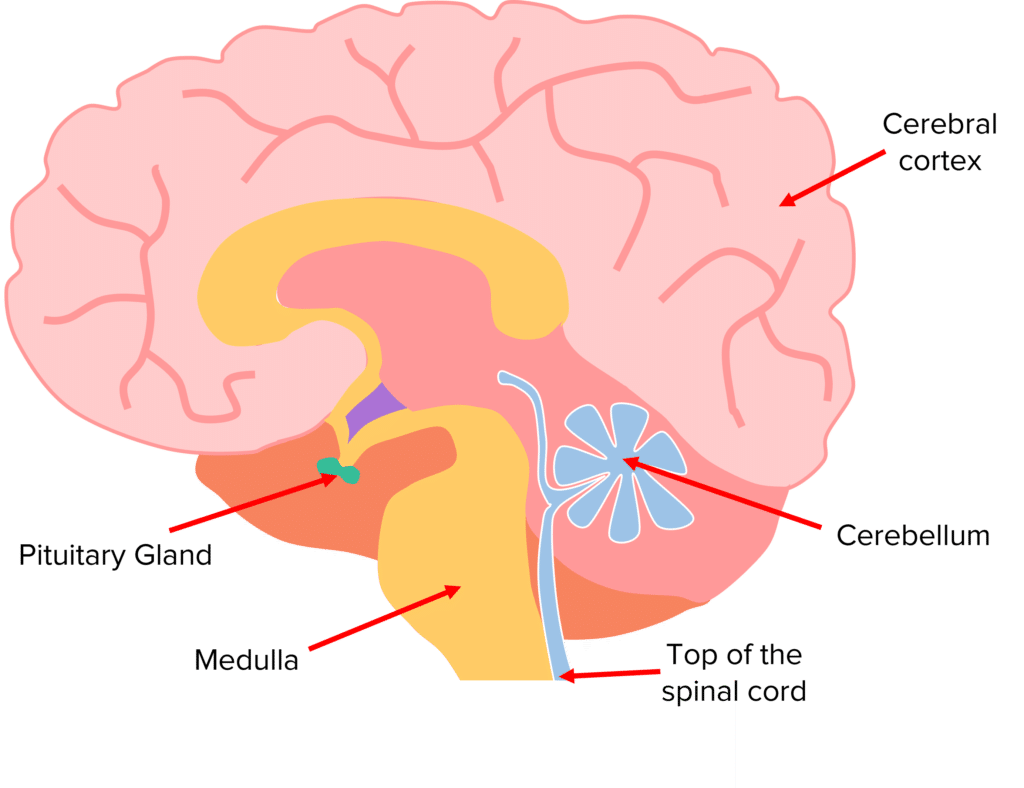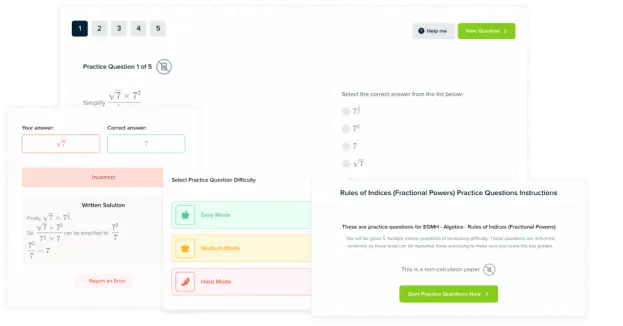The Brain
The Brain Revision
The Brain
The brain is a vital part of the central nervous system, responsible for controlling complex behaviours. It has different sections, that all perform different roles. There are a few methods that scientists use to gain a better understanding of how the brain functions.
Brain Structure
The central nervous system is made up of the brain and spinal cord.
The brain is responsible for all complex behaviour, e.g. consciousness, speech, memory, movement, breathing.
It is made up of billions of interconnected neurones and has different sections that all carry out specific functions within the body:

- Cerebral cortex– Highly folded outer part of the brain that is split into two hemispheres. It controls things like, intelligence, memory, consciousness, language and personality.
- Cerebellum– Found underneath the cerebral cortex and responsible for co-ordinating movement, balance, and muscle activity.
- Medulla– controls unconscious activities such as breathing and keeping the heart beating.
- Pituitary gland – ‘master gland’ that releases essential hormones and controls other glands around the body.
- Hypothalamus– regulates temperature and water in the body.
Studying the Brain
Scientists are always looking for new ways to study the brain so they can gain a better understanding about how it works and subsequently create new treatments for patients with brain damage and diseases.
However, due to the delicacy and intricacy of the brain, scientists struggle to do so. The different sections do not work in isolation and new potential treatments come with a massive risk of more damage being done, e.g. accidental physical damage to the brain can cause permanent speech issues, motor issues or changes to personality.
Scientists use a few reliable and safe methods to investigate how the different parts of the brain function:
- Scientists learn a lot from patients with brain damage. They look at the patterns between the specific areas that are damaged and the effect it has on the patient to work out what each section is responsible for, e.g. damage to the front of the brain can cause changes in personality and damage to the back of the brain can cause blindness.
- Tiny electrodes can be used to electrically stimulate different parts of the brain. This can cause different effects in the individual depending on the section stimulated, e.g. when medulla is stimulated, movement occurs.
- MRI scanners are used to produce detailed pictures of the active areas of the brain. Scientists can use them to identify patterns between what a person is thinking about or doing and which area of the brain is active at that particular time, e.g. different sections of the brain are active while recalling a memory than while listening to music.
The Brain Example Questions
Question 1: What is the function of the medulla?
[1 mark]
It controls unconscious activities.
Question 2: Why do scientists struggle to study the brain?
[2 marks]
The brain is very delicate so easily damaged.
The different sections of the brain do not work in isolation.
Question 3: How can scientists use people with brain damage to study how the different sections of the brain function?
[2 marks]
Scientists look for patterns between the area that has been damaged and the effects on the patient to work out what each section is meant to control.
The Brain Worksheet and Example Questions
The Brain Questions
GCSEOfficial MME
MME Premium Membership
£19.99
/monthLearn an entire GCSE course for maths, English and science on the most comprehensive online learning platform. With revision explainer videos & notes, practice questions, topic tests and full mock exams for each topic on every course, it’s easy to Learn and Revise with the MME Learning Portal.
Sign Up Now

